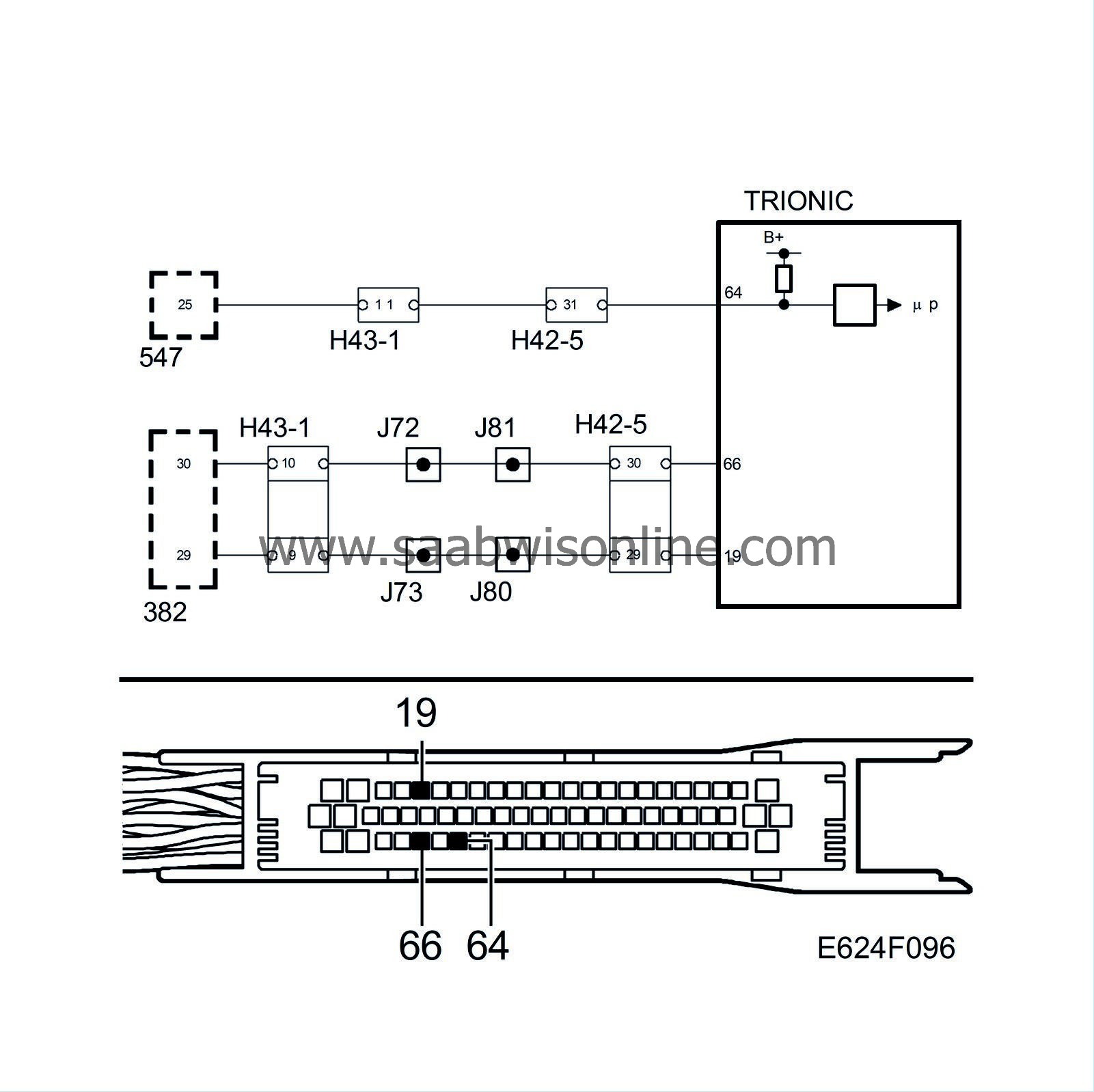P0501
Read the instructions below then
start the fault diagnostic procedure.
Symptom: CHECK ENGINE.
Cruise control inoperative.
Low engine torque on cars with manual gearbox.
Vehicle Speed. Input signal outside limits.

Fault symptoms
|
•
|
Cruise control inoperative.
|
|
•
|
Low engine torque on cars with manual gearbox.
|
On-Board Diagnostics
Type of diagnosis:
|
-
|
Tests 1 and 2: Continuous. But interrupted when fault criteria fulfilled and does not restart until next driving cycle.
|
Enable criteria:
|
-
|
Test 1: Engine running.
|
|
-
|
Test 2: Engine running. Speed 50-205 km/h for longer than 10 s. Brake pedal not depressed.
|
Fault criteria:
|
-
|
Test 1: Speed exceeding 270 km/h.
|
|
-
|
Test 2: Speed rises more than 120 km/h or drops more than 50 km/h within 1 s.
|
Dependents:
System reaction to a fault:
|
-
|
Cruise control is blocked. Vehicle speed (Bus from MIU) is used as a substitute value. The idling adaptation is blocked and reset.
|
OK report:
|
-
|
60 sec has expired since start. Vehicle speed has exceeded 0 on some occasion.
|
Fault handling:
(See “Fault diagnosis, general” for more information.)
Diagnostic help
Fault diagnosis concerns electrical faults in connecting cables to ABS (check first whether there is a fault in ABS or TC/ABS). Communication with Trionic is via the P-bus if the car is equipped with TC/ABS. For further information on fault diagnosis of communication with TC/ABS, see
Fault diagnosis strategy for electronic systems
. DTC P1625 will be generated if TC/ABS is missing from the bus, see
P1625
.
Diagnostic tool functions related to this fault are:
|
•
|
Diagnostic status for the diagnosis.
|
|
•
|
Vehicle speed (Lead from ABS, alternatively bus from TC/ABS.), unit km/h.
|
See also description of
Menu "Read Values"
for more information.
Check the wiring
Jiggle the leads and in-line connectors at various points and in different directions to detect any intermittent breaks or short circuits in the wiring. Observe the multimeter, test lamp or diagnostic tool while doing this.



